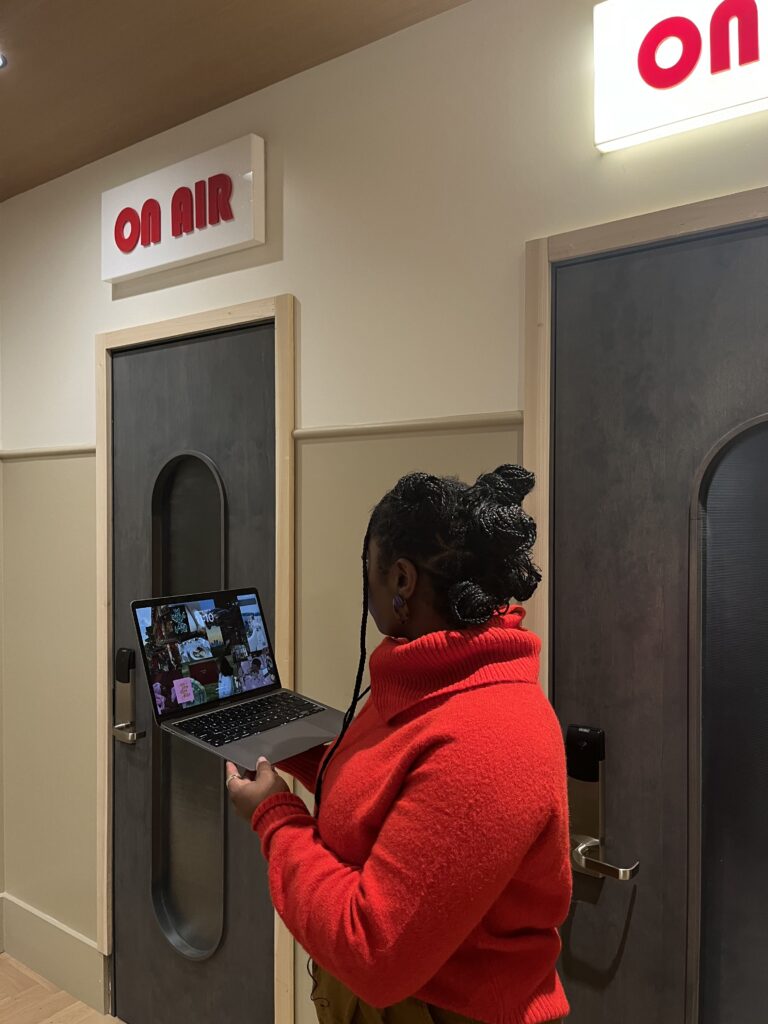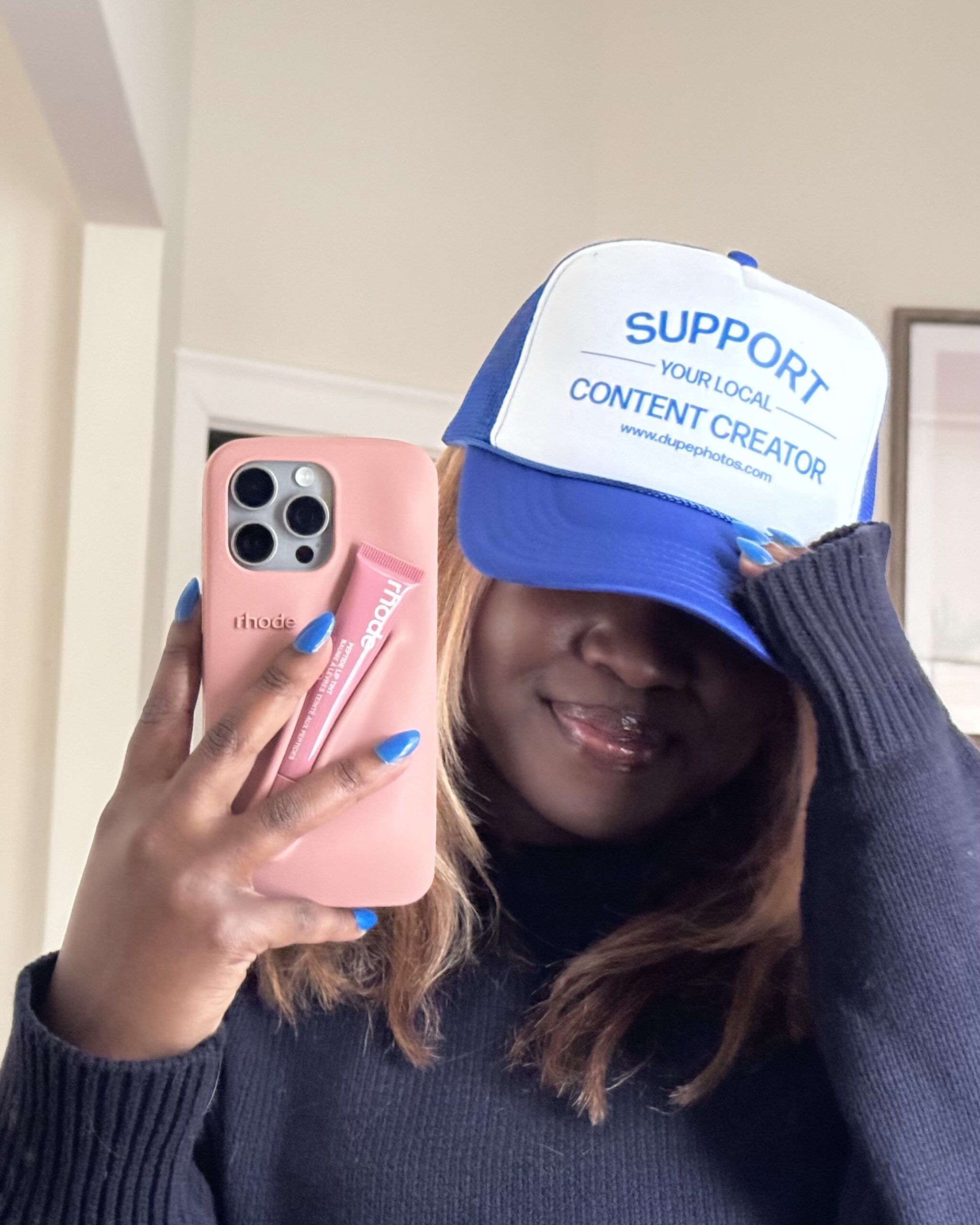HEY FRIEND!
I'm jemilla!
In the past 4 years, I’ve cut my teeth strategizing & writing award-worthy, revenue-increasing, results-snatching copy. And what really lights my fire is writing for woman-owned and BIPOC-led brands. I’m talkin’ the first day after a braiding appointment type of excited! Energizing them to go big with their bold ideas so that when launch time happens, the world thinks “OMG FINALLY, I’ve been waiting for something like this.” And giving them the tools to diversify the market.
about me
services
How to Get More Clients By Optimizing Your Four-Page Website
August 26, 2025
Watching site visitors bounce before they become clients probably feels like being one of those people on a busy city street trying to get you to donate to their charity. Those noble people have the hustle and bustle of pavement pounders to battle. Service providers have to tussle with an all looks, no substance problem—or, in other words, focusing on design over strategic content placement.
That’s why, in this post, I’m going to dive into the core four web pages every service provider needs on their website—Home, About, Services, and Contact—and how to structure them for maximum client acquisition.

Page 1: The Strategic Homepage
Your home page is the first stop and, for some, a one-stop shop for all site visitors need to know before bothering to go to another web page.
It needs to make a strong first impression and guide visitors to take action. So, it needs:
A Clear value proposition within 5 seconds
A value proposition is a concise statement that explains what people get out of your services, and what makes them unique and desirable compared to competitors.
So you’ll want to:
- Do extensive competitor research to see what’s great about their products and services
- Figure out what your ideal clients care about, so you can determine the best message to prioritize
- Write a bunch of variations for your value proposition so it best encapsulates your service benefits and competitive advantage
Hero section that speaks directly to your ideal client’s pain points
I call this the “connection section” because it connects very well to your reader. I like to have this right below the hero section, speaking to the most deeply-felt problems your site visitor is going through. Then, segueing to how your solution can help them achieve their goals and dreams!
So, make sure to conduct extensive consumer research with surveys, interviews, and your own deep digging on the internet to find out what your target audience struggles with most.
Social proof placement
Testimonials, client logos, and case study snippets are a great way to show that:
- People trust you
- You get results
And with social proof being a big psychological technique—arguably, one of the most important—having this on your home page is a MUST. So, if you aren’t already, make a client feedback form a mandatory part of your off-boarding process. Showcase testimonials that prove any claims you make in your copy, and make sure to show social proof that proves you’re:
- Credible
- The perfect blend of all the things your ideal client cares about most
Strategic call-to-action placement
Buttons are where the action happens—and if conversion is a sore subject for you, your CTAs need to be more strategic.
- You’ll want CTAs to your services page in the hero section and after featuring your services
- Put a CTA to your booking page after your value proposition and/or at the very bottom of the page so your site visitor takes the desired action
Page 2: The Authority-Building About Page
This page is not just for you to share your coffee order. It’s meant to build trust and establish your expertise while remaining client-focused. So yes, technically this page should be about you—but told through the lens of how it benefits your client.
So you have such-and-such certification. How does that benefit your client?
So you don’t have a traditional education and worked your way up to your current status. How does that benefit your client?
What you’ll want to have on your about page:
Your unique story and why you started your business
Everyone has a different path to how they got to where they are, and that gives you your own special sauce. So, you can share a chronological history of your career and why you started your business—because your why matters just as much as your how.
Credentials, certifications, and experience that matter to clients
All of this is, again, social proof that validates you’re an authority in your field and trustworthy. Because without trust, what do you even have? A bunch of site visitors that bounce before becoming clients, that’s what.
So make sure to catalogue all your credentials, certifications, and experience that matter to your ideal clients so you can feature them on your about page.
Your approach or methodology
With the online space being as saturated as it is, one of the only things to differentiate yourself from the rest is your unique approach, methodology, or philosophy to your work. For example, I lean into culturally-relevant, storytelling-focused copy that naturally infuses research insight into copywriting. While other copywriters might focus solely on SEO.
Personal touches that make you relatable
Other than your coffee order, you could think about what you do before, after, and during work! I, for example, will have a dance break to decompress and get my creative juices flowing. I have an active 5-9 life that I always share on my IG stories in a weekly dopamine dump, so I share the fun things I like to do AFK. People know me for these things, and it makes me more relatable—so apply that to you!
End with a clear next step
Knowing how to end your about page might escape you, but it all depends on your goal. If it’s to convert site visitors into clients, the ideal next step would be to send them to the services page so they can book you. But if you want to get booked for more speaking engagements, send them to your guest speaking/PR page!
Page 3: The Comprehensive Services Page
This page needs to clearly communicate what you offer and how it solves client problems. So you’ll want to:
Lead with client outcomes, not service features
What will happen after booking your service? Really paint a picture of how your client will achieve their goals and have a better life.
Use benefit-driven headlines for each service
If you have branded names for your services, awesome! But, more than anything, you want to focus on the benefit of the service. For example, my website copy service “Turns your website into a client magnet” while my sales page “Gives you a 24/7 salesperson that’s always up for best employee of the month”.
Include pricing information (ranges or starting points)
NO ONE likes having to download a pricing guide. I get the argument that not showing your pricing weeds out the not-serious leads from the serious clients, but it honestly just adds another hurdle to their search process. You can weed out the red flag clients on a sales call, but you might lose a green flag client by giving them an obstacle.
Address common objections or concerns
Your site visitor is probably looking at other related service providers, and may have run into some questions, concerns, or have objections on the tip of their tongue. So, do your research to discover common objections or concerns your ideal client may have,
Include relevant case studies or examples
Not every project you’ve worked on will matter to your ideal client, or be relevant to the service(s) you’re trying to sell. So only feature the ones that will help you land the sale.
Page 4: The Conversion-Focused Contact Page
With your contact page, you want to make it as easy as possible for prospects to get in touch. That means having:
- Multiple contact methods → That could be your phone number (though I would NOT put that on your site if I were you if red flag clients could get to you), email address, mailing address, and contact form. Make it easy to book you, because having any sort of friction will impact your conversion rate
- Clear business hours and response expectations → When can people expect to hear back from you, and what can they expect to happen next?
- Office location/service area information → If you’re an in-person service provider, you need to show people where you’re located so they can get to you
- FAQ section → People will skim, so they’ll still have questions, so you’ll want to address the common ones
Common Mistakes to Avoid
Generic messaging that could apply to any business
In a saturated online space, your voice is another one of the few ways to differentiate yourself from your competitors. Think: how do you want people to feel? How does your ideal client want to be spoken to? What do you want to be known for? The answers to these questions will help you to define a brand voice that makes you iconic.
Overwhelming visitors with too many options
This is where I’d say a pricing/services guide is a good idea, because you can feature the main/most popular services on your website, and keep the rest and add-ons in the footnotes. You can go into detail on your other services on a sales call or in a proposal email, but inundating a site visitor who isn’t even sure they want to book you yet is a bit much.
Making your copy hard to read
A lot of people don’t bother reading more than 20% of copy on a page anyway, so make it easy on yourself by keeping you copy scannable. Break copy into small chunks, bulleted lists, and interject paragraphs with visual media.
Burying contact information
People want to know that they can ask you questions directly or get in touch with you for anything. So don’t make it hard to find your email address, contact form or, hell, even your full name! Some people really care about knowing your full John Hancock, so make that all easily accessible.
How These Pages Work Together
Your four core pages are an interconnected ecosystem designed to guide people from curiosity to contact. Understanding how these pages work together is vital for maximizing your website’s conversion potential.
The Strategic Client Journey
Most people don’t follow a linear path through your website. However, there are common patterns worth designing for. Usually, visitors land on your homepage first (whether through search, referrals, or your marketing efforts), where they quickly decide if you’re worth their time. If you pass this initial test, they’ll often bounce between your About and Services pages, building confidence in your expertise while evaluating whether your offerings match their needs.
The contact page is usually the final destination, but people rarely go there until they’ve gotten enough information to feel comfortable reaching out.
Cross-Linking Strategies That Work
Strategic internal linking keeps visitors engaged and moving through your website until they convert into a client. Your home page should link prominently to all three other pages, but be selective about which services you highlight. Focus on your most profitable or popular offerings rather than listing everything.
From your about page, link naturally to specific services when you mention your expertise areas. This helps people immediately see how your background translates to solutions they need.
Your services page should link back to relevant sections of your about page to reinforce your qualifications, and always end with clear pathways to your contact page.
And when you mention a client success story on your services page, link to your about page where you detail your methodology.
Maintaining Message Consistency
Your four pages should feel like chapters in the same book, not random articles thrown together. This means keeping a consistent tone, terminology, and value propositions throughout.
If your home page promises “stress-free project management,” your services page should explain how your process eliminates stress, and your about page should reinforce your commitment to making clients’ lives easier.
Pay attention to the language your ideal clients use when describing their problems, and mirror this across all pages. A financial advisor targeting small business owners should use different terminology than one focusing on retirees, and this distinction should be clear on every page.
Using Your Pages for Lead Qualification
Again, you want to weed out the red flag clients before they ever make it to a sales call. Your services page can do heavy lifting here by clearly stating your minimum project sizes, your ideal client characteristics, or your typical timelines. This helps ensure that the people who do contact you are more likely to be good fits.
Your about page can also do this by describing your work style, values, or approach. If you prefer collaborative clients, say so. If you work best with decisive business owners who can make quick decisions, make that clear. This self-selection process saves everyone time and leads to better client relationships.
Beyond the Core Four: What Comes Next
Once your foundation is solid, you can consider adding other pages to make your website more effectiveness. But resist the urge to add pages just because other websites have them. Every additional page should serve a specific purpose in your client acquisition strategy.
That could include:
- A dedicated testimonials page, which allows for longer-form testimonials that tell complete transformation stories
- Case studies pages when you have detailed project examples that demonstrate your process and results—these work particularly well if you have complex or high-value offerings
- An FAQs page to reduce the number of basic inquiries you receive while addressing common objections
- A blog to establish thought leadership and improve your search engine visibility—but only if you can commit to consistent, valuable content. For most service providers, publishing one high-quality post per month is more effective than sporadic posting
- Portfolio pages to showcase your work, which makes sense for designers, photographers, or other visual professionals, but be cautious about including confidential client work
Wrapping It Up
If your core four pages aren’t optimized yet, resist the temptation to add new pages. A homepage that clearly communicates your value proposition will outperform ten mediocre pages every time. Focus on perfecting your foundation before expanding.
Then, when you’re ready to add pages, prioritize based on your specific business needs and client feedback. If prospects frequently ask the same questions, add an FAQ page. If you have compelling success stories, create a testimonials page. Let actual client interactions guide your decisions rather than copying what competitors are doing.
Website Copy Solutions

Need your core four web pages improved ASAP?
Grab my Website Copy Prep Workbook so you can check all these boxes for your home, about, services, and contact pages.
I write website copy for small business owners all the time—like, it’s THE MAIN thing I do. Inquire for my 1:1 website copywriting service
Also, I’m about to launch a website copywriting template bundle that helps you write the content for these core four web pages. Sign up for the waiting list to get the copy template bundle when it drops!






